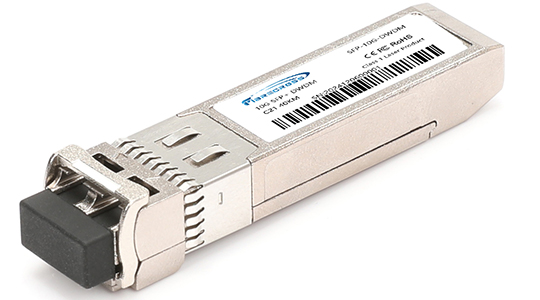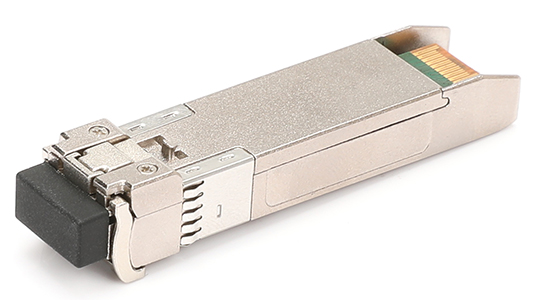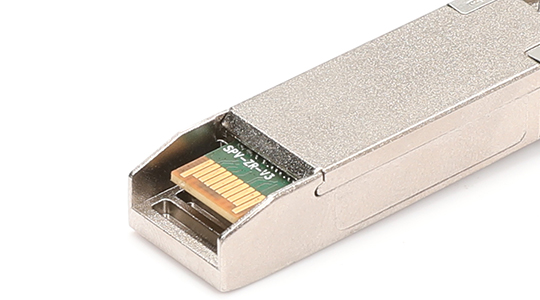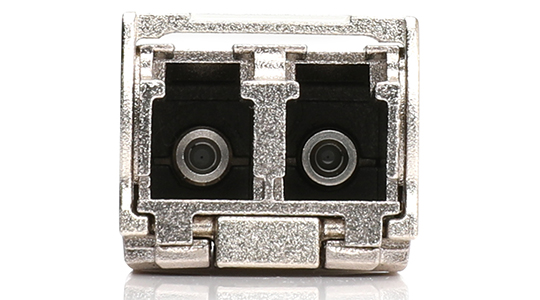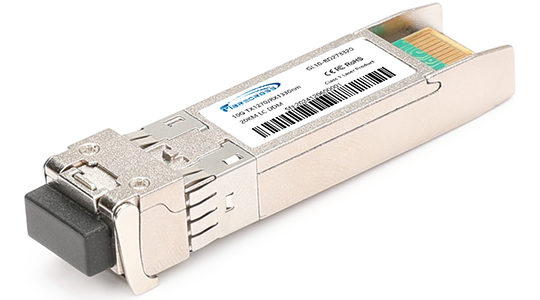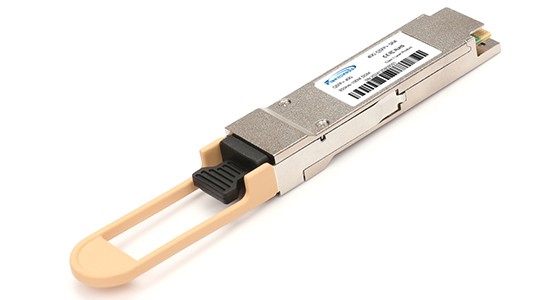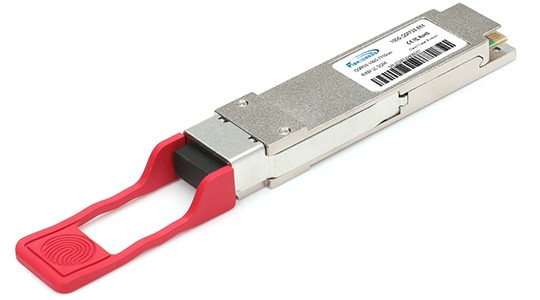10GB SFP+ DWDM Optical Transceivers
DWDM 10G SFP+ Optical Transceiver Module are high performance,cost effective modules supporting data rate of 11.3Gbps and 40km/80km transmission distance with SMF. The transceiver consists of three sections: a cooled EML DFB laser transmitter, a PIN photo-diode integrated with a trans-impedance preamplifier (TIA) and MCU control unit. All modules satisfy class I laser safety requirements.
| Part Number | Product | Max Data Rate | Wavelength | Laser Type (TX/RX) | Tx Power (dBm) | Sensitivity (dbm) | Distance | Connector | Temp |
| GL10-DWxxER40C/I | 10G SFP+ DWDM 40km | 10.3Gbps | C21~C61 | EML/PIN | 0~3 | ≤-15.8 | 40km | Duplex LC | 0~70 ℃/-10~85°C |
| GL10-DWxxZR80C/I | 10G SFP+ DWDM 80km | 10.3Gbps | C21~C61 | EML/APD | 0~5 | ≤-24 | 80km | Duplex LC | 0~70 ℃/-10~85°C |
- Applications
- Features
Long-haul optical transmission
Metro and regional DWDM networks
Telecom backbone links
Enterprise and ISP backbone
10G DWDM links in data centers
Cloud and high-performance computing (HPC) networks
Data rate: up to 10 Gbps (9.95–11.3 Gb/s), suitable for 10G Ethernet, Fibre Channel, SONET/SDH
Wavelength: ITU C‑band DWDM channels from ~1528.77 nm–1563.86 nm (50 or 100 GHz spacing)
Transmission distance: models supporting 40 km, 80 km, up to 100 km over single‑mode fiber (SMF)
Laser & detector: EML transmitter, APD or PIN receiver, CDR support on higher‑end models
Power & size: hot‑pluggable SFP+ form factor, low power consumption (~1.4 W–2.2 W), operates at +3.3 V
Diagnostics: Digital Diagnostic Monitoring (DDM/DOM) per SFF‑8472 interface for real‑time monitoring
Compliance: SFP+ MSA‑compliant (SFF‑8431, SFF‑8432), IEEE 802.3ae, RoHS‑compliant and lead‑free
Why Choose Fibrecross
Direct factory pricing – eliminate middlemen
Low MOQ and bulk availability
Proven compatibility with major OEMs (Cisco, Juniper, Huawei, HP, Arista etc.)
Global shipping and support, advanced test equipment
FAQ About 10G SFP+ DWDM Optical Transceivers
- DWDM uses narrower wavelength spacing (0.4–0.8 nm), supporting up to 80–96 channels, ideal for long distances and high capacity.
- CWDM uses wider spacing (20 nm), supporting up to 18 channels, suited for shorter distances (up to 80 km) and lower costs.
DWDM is more expensive but offers greater scalability for dense networks.
Compatibility depends on the device and vendor:
- DWDM SFP+ modules follow the Multi-Source Agreement (MSA), ensuring broad compatibility.
- Some vendors may enforce firmware checks, requiring vendor-specific or programmable modules.
- Always verify the device’s compatibility matrix before deployment.
Fibrecross is recognized as a leading 10G DWDM SFP+ supplier, offering high-quality, cost-effective modules with global brand compatibility and reliable performance.
- Distance: Select based on required reach (e.g., 40 km, 80 km).
- Wavelength: Fixed or tunable, matching your DWDM grid.
- Compatibility: Verify with your switch/router vendor.
- Environment: Ensure the module supports your operating temperature range.
- Budget: Balance cost with scalability needs.
Major suppliers (such as Fibrecross), third-party suppliers, and distributors specializing in compatible or OEM fiber products. Be sure to buy from reputable sources to avoid buying counterfeit products.
Pricing varies by channel and volume; typical price ranges from $120 to $200 per unit. Contact us for a custom quote based on your specifications and order volume.
Related Products
Related Blogs

6 Practical Tips for Choosing the Right Optical Transceiver
6 Practical Tips for Choosing the Right Optical Transceiver Optical transceivers are the unsung heroes of modern networks, quietly converting electrical signals into light and

What makes an affordable 10G SFP+ optical transceiver a good choice for small businesses?
Upgrade your small business network with affordable 10G SFP+ optical transceivers. Boost speed, reliability & scalability for LANs, data centers & surveillance.

Where to Buy 10G SFP+ Transceivers Online
This blog explores why these 10G SFP+ Transceiver modules are a great choice and highlights the best online sources to purchase them!

